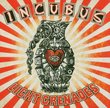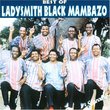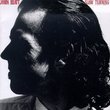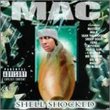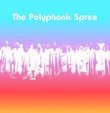| All Artists: Klaus Schulze Title: Irrlicht Members Wishing: 4 Total Copies: 0 Label: Thunderbolt (UK) Release Date: 7/22/1994 Genres: Dance & Electronic, Alternative Rock, New Age, Rock Styles: Electronica, Progressive, Progressive Rock Number of Discs: 1 SwapaCD Credits: 1 |
Search - Klaus Schulze :: Irrlicht
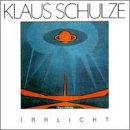 | Klaus Schulze Irrlicht Genres: Dance & Electronic, Alternative Rock, New Age, Rock
Irrlicht is the solo debut album from Klaus Schulze (originally released in 1972) and is an absolute masterpiece in cosmic, space music. Schulze omitted the use of synthetics for this recording, relying on organ with vario... more » |
Larger Image |
CD DetailsSynopsis
Album Description Irrlicht is the solo debut album from Klaus Schulze (originally released in 1972) and is an absolute masterpiece in cosmic, space music. Schulze omitted the use of synthetics for this recording, relying on organ with various electronic effects to produce an absolutely mesmerizing and minimalist body of sounds that transform the listener into a total abstracted world full of mysteries within its almost never-ending spiral. With no electronic pulse and rhythms, just a gloomy and distorted atmosphere this record can easily haunt and hypnotize. Considered by many to be his finest and purest body of work, the new and definitive Revisited Records version contains the 24 minute bonus track, Dungeon and comes packaged in a deluxe digipak with new liner notes and rare photos. Klaus Schulze first attracted attention as a member of the German progressive rock band, Tangerine Dream. Following the release of their debut LP, Electronic Meditation, he departed for a solo career. Klaus' recorded work typically features extended pieces sometimes filling an entire album built around computer-generated synthesizers and other specially programmed electronic effects. Klaus Schulze remains a cult figure in the United States, where the bulk of his prolific output has until now been available only through the import bins. He is widely considered an avant-garde mainstay as well as a founding father of both the new-age space music and electronica genres. Similar CDsSimilarly Requested CDs
|
CD ReviewsKlaus Schulze's Classic Debut Remastered!!! Louie Bourland | Garden Grove CA | 06/24/2006 (5 out of 5 stars) "The year was 1972 when former Tangerine Dream and Ash Ra Tempel member Klaus Schulze embarked on his lengthy solo career which continues to this day. Although it is considered to be a pioneering classic in Electronic music today, Schulze's solo debut "Irrlicht" was not well received when it was first released 34 years ago. Many listeners (as well as members of the orchestra which Klaus used on the album) didn't quite know what to think at the time. However, the listening public finally caught up with Klaus's crazy ideas and the album has since become a blueprint for the ambient/drone genre. Although Klaus Schulze has long been regarded as a pioneer of synthesizers, "Irrlicht" was actually created without any synths whatsoever as Klaus did not own one yet. The instruments and tools that were used were the above-mentioned orchestra as well as a primitive electric organ, a broken guitar amplifier, echo and effect devices as well as other miscellaneous objects. "Irrlicht" is essentially an album-length piece divided into three distinct movements. The opening 23-minute movement "Ebene" opens with a giant orchestra rush which leads into a low-end organ drone centered around D-minor. As the organ drone shifts and pulsates, the orchestra creates and intense cinematic atmosphere around it. After about 10-minutes, the mood becomes more intense as Klaus brings in a dark chord sequence which builds with suspense. The panning effect as well as the shrieking background noises used towards the end of the movement add further intensity until it's all washed away by loud gong-like crash. The crash begins the short second movement, "Gewitter". While it sounds like there is a primitive synthesizer being used on this track, it actually is Klaus using a broken-down amplifier and a rewired organ. The intense organ theme of the first movement is pushed to the backround while strange sound effects as well as various percussive sounds (which sound like cymbals, gongs and trash cans being hit while being drenched with echo) come to the forefront. The last movement, "Exil Sils Maria", is probably the most experimental movement of the three. It begins with a dark orchestral/organ theme similar to the first movement only more forboding. This leads into an extremely avant-garde section consisting of a droning collage of backward-sounding noises and what sounds like a car motor being amplified. This section is a real treat to be heard with headphones. Afterwards, the movement shifts back to how it began with its dark organ theme. The newly remastered edition includes a highly informative essay from Klaus Schulze himself as well as a never before released bonus track. "Dungeon" was supossedly recorded in 1976 (although there is speculation that it could have been recorded earlier in the liner notes) but is very much in the same style as the original "Irrlicht" album with its long held chords and drones. With this said, if you've never heard Klaus Schulze's "Irrlicht" before, now's the time to do so especially since it has been given pristine treatment on this reissue. The sound is amazing and so is the music. This is definitely music that was way ahead of its time when it was first released in 1972. Now, three decades later, it's an influential classic!!! " Great debut from one of the big names of electronic music BENJAMIN MILER | Veneta, Oregon | 04/15/2007 (5 out of 5 stars) "After appearing on the debut albums of Tangerine Dream and Ash Ra Tempel, he disembarked on a solo career. He was getting sick of what he felt was more time trying to get everyone in a band to decide on what to play than it was to actually play the music. Also he was losing interest in drumming so he switched to keyboards. Irrlicht was his first solo offering, and although he did periodically appear in other groups up until 1974, including The Cosmic Jokers (an unintended project with Wallenstein and Ash Ra Tempel members whose material got released behind their backs), Code III, and let's not forget the one-off reunion of the original Ash Ra Tempel at the end of 1972 that made up the album Join Inn (1973). Irrlicht was originally released on the Ohr label with artwork by Schulze himself, but when he moved to Brain (thanks to the Cosmic Jokers fiasco that brought an end to the career Rolf U. Kaiser, head honcho of Ohr/Kosmische Musik, which went under thanks to the lawsuits), the album featured new artwork, the more familiar artwork by Urs Amman (who also did the covers to the Brain version of Cyborg, plus Blackdance and Timewind). It's interesting to note that Irrlicht was not recorded with any synthesizer. Schulze was on a limited budget and basically used whatever he could at his disposal. The organ is one, but he's also credited to guitar, voice, percussion, and zither, which, aside from the organ, you can't tell because it's so electronically processed. He hotwired the amplifier and rigged the organ to get it to do things they would not normally do, no surprise that doing this fried his amp in the process of recording the album, but that gave him enough material for an album. He also had a four piece orchestra helping out, which sounded so distorted you could get fooled for a Mellotron. Schulze had a career very much parallel to what Tangerine Dream was doing around the same time, very highly experimental space music, and like TD, started going for synthesizer-dominated electronic music by 1974. With Irrlicht he was experimenting with extended drones, as demonstrated on "Satz: Ebene". Here it's lot of strange droning. Not the kind of stuff for people with short attention spans, to say the least. There's some pulsing later on in this piece, which leads up to the more spacy "Satz: Gewitter", which reminds more of the more mellow moments of Ash Ra Tempel's debut album (but of course, without Manuel Göttsching's guitar). The final piece "Satz: Exil Sils Maria" is a nice early experiment in ambient, it's one of those pieces that you'll be guessing what made those sounds. The whole album is quite tripped out. Then for a bonus, you get "Dungeon", which sounds like a later recording (perhaps 1974) because synthesizers are quite dominate, plus an Elka Rhapsody. But it has that same droning quality of Irrlicht, so it only made sense it should be included as a bonus cut here, even if it likely existed around the Picture Music or Blackdance time-period. Really, Irrlicht is by far my favorite of the early Schulze albums, and it's little wonder how he became such an innovative figure in the worlds of electronic and Krautrock. Newcomers probably should try one of his electronic albums like Timewind, of course, but this is a great album to have to, to see how Schulze started off as a solo artist." This album taught me some things Scott W. Larson | Portland, OR | 06/04/2008 (4 out of 5 stars) "I haven't found any electronic music like Irrlicht. Only Cabaret Voltaire came close to making music that intrigues me as much as Klaus Schultze's first album.
On paper it should sound awful. There are no synthesizers, just a screwed up organ that only made a low bass note and lots of fuzzy noises. The orchestra was recorded by Schultze on a cheap cassette recorder about a mile away, and the conductor insisted on TALKING to the orchestra during the whole recording despite Schultze begging him to shut up. The rest of the noises are cheap percussion and whatever else Schultze found laying around that made noise. All this junk comes together to make "sound" that's completely unique and unsettling. The one-note bass organ gets your attention immediately. The fuzzy noises make a swirl of sound that surrounds you and disappears into deep echoes without explanation. When the low-fi recording of the orchestra begins to play during this inexplicable racket, it sounds like a worn recorded artifact from an ancient civilization, back when dozens of people played music together on wooden instruments. The most surprising contradiction is that the incomprehensible yelling of the conductor doesn't ruin the recording but instead adds a feeling of extreme seriousness and importance to this strange music as if it were the only music of its kind left in the world. The noise and backwards recordings we hear on the subsequent "songs" are nearly as unsettling. Who would put all these odd sounds together? [Warning: Never listen to this music backwards. The actual sounds are very disappointing when heard in the right direction!] What makes all this amateurish tomfoolery convincing is the outstanding quality of the final recording. The orchestra sounds like a faded broadcast, the individual noises are simple, but the album itself sounds excellent with all sounds reverberating in full stereo as if they had all been made by legitimate instruments in a first class production. Yes, enough echo can make almost anything sound interesting!" |

 Track Listings (3) - Disc #1
Track Listings (3) - Disc #1


